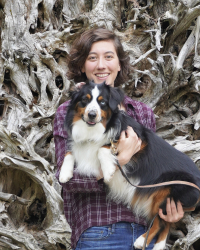I met with Amy Platenkamp in a side room in the third floor lab. The tables lining the two long walls of the narrow space were covered with dissecting microscopes and boxes of plastic tubes. Shelves stacked with more boxes of tubes extended up the walls to the ceiling. At the bottom of each tube was a layer of solid brown fly food, and above this layer each tube was filled with fruit flies.
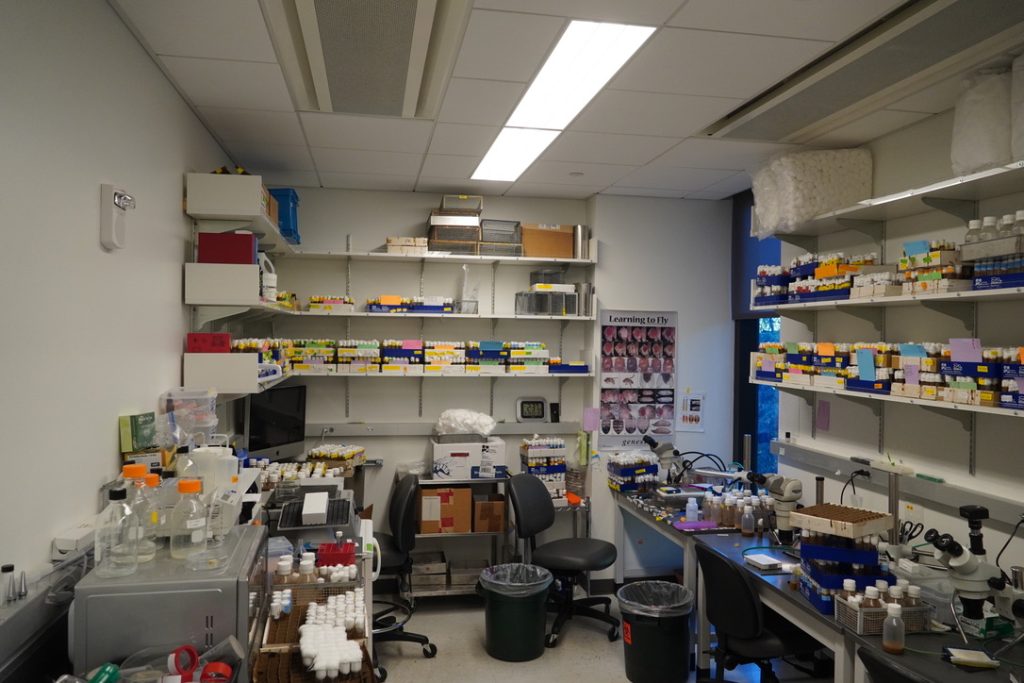
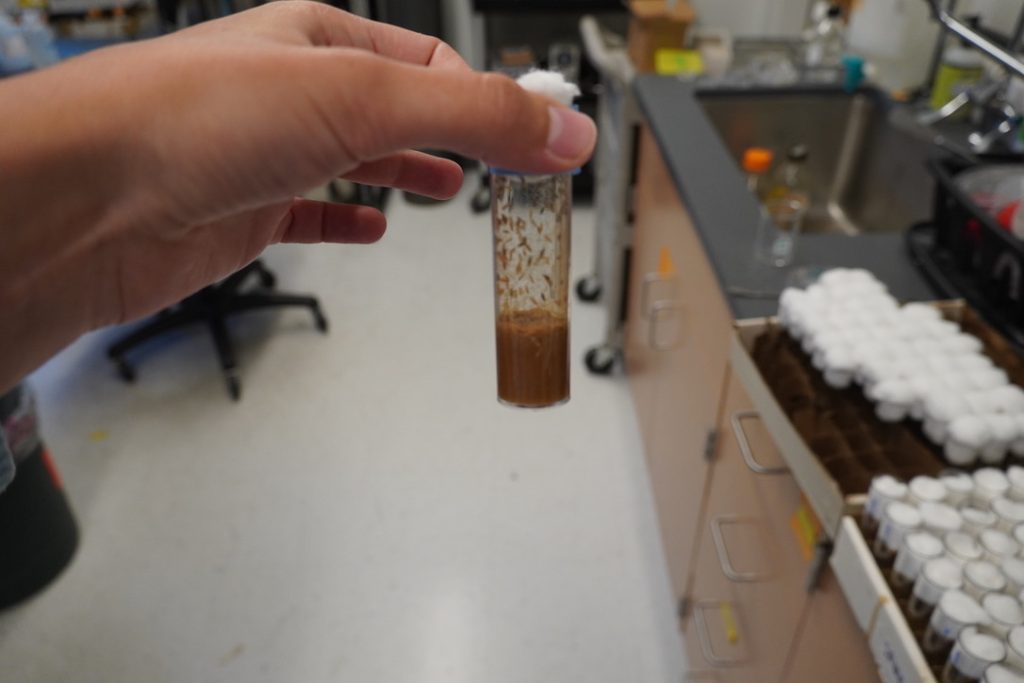
“We use fruit flies as a model system because they’ve been studied for one hundred years” Amy explains as she sits in a rolly chair in front of a dissecting scope. “We have a lot of genetic tools for them, and their skin is transparent when they are larvae which makes it easy to see fluorescent proteins.” These advantages are necessary for Amy’s research, because she is studying microscopic regions in the developing fly larvae skin that can be both crucial to the larvae’s proper development and very challenging to see.
Amy studies the interactions between epidermal cells (or skin cells) and nociceptive sensory neurons in the fly larvae. Nociceptive sensory neurons are the neurons that allow the fly to sense and respond to painful stimuli. These neurons have projections called dendrites that are distributed throughout the larvae just below a single layer of epidermal cells. The epidermal cells wrap around the neurons along some stretches of the neurons’ dendrites. This wrapping is known as ensheathment and is a focus of Amy’s research.
Scientists have previously shown that ensheathment affects a fly larva’s ability to respond to painful stimuli. In order to measure a fly’s sensitivity to painful stimuli, scientists will poke larvae and measure the number of larvae that roll. Fruit fly larvae have evolved to roll towards a nociceptive poke in order to escape parasitic wasp stings in the wild (or else become the host to the wasp’s embryos). About 70% of wild-type (or genetically unaltered) larvae will roll to escape the nociceptive poking stimulus. The genetic toolkit developed for the fruit flies has enabled scientists to create mutant flies that have no ensheathment or altered amounts of ensheathment. These mutants roll at different rates in response to pokes, which has led scientists to conclude that ensheathment is important to nociceptive sensing in fly larvae. Amy is working to discover the specific molecular interactions taking place in ensheathed areas that enable nociceptive sensing.
As a starting point, Amy is first investigating a receptor protein not previously shown to be involved in ensheathment. Using antibodies specific for the receptor, she can visualize the distribution of the receptor and has found it to be localized to what are likely ensheathment sites. She also has flies with mutations in the receptor’s gene that render the receptor non-functional. She has quantified the amount of ensheathment in these mutants by assessing the expression pattern of an ensheathing protein, Coracle. Coracle accumulates at late stages of ensheathment, and in the receptor mutant, there is significantly less Coracle stretches along dendrites. Additionally, the neurons’ dendrites are more dense in the mutant, which is an indication that they are less restricted by ensheathments. Amy is curious if there is an isoform-specific (isoforms are alternative protein products of a gene) role for the receptor in developmental ensheathment and would like to define the behavior of the receptor mutant to nociceptive inputs and the mechanism in ensheathment.
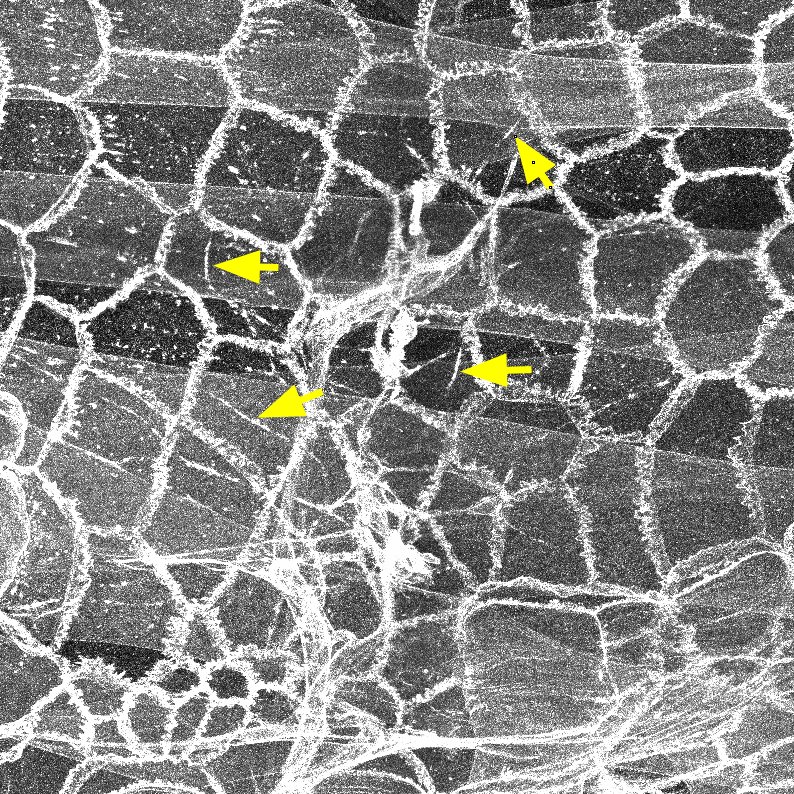
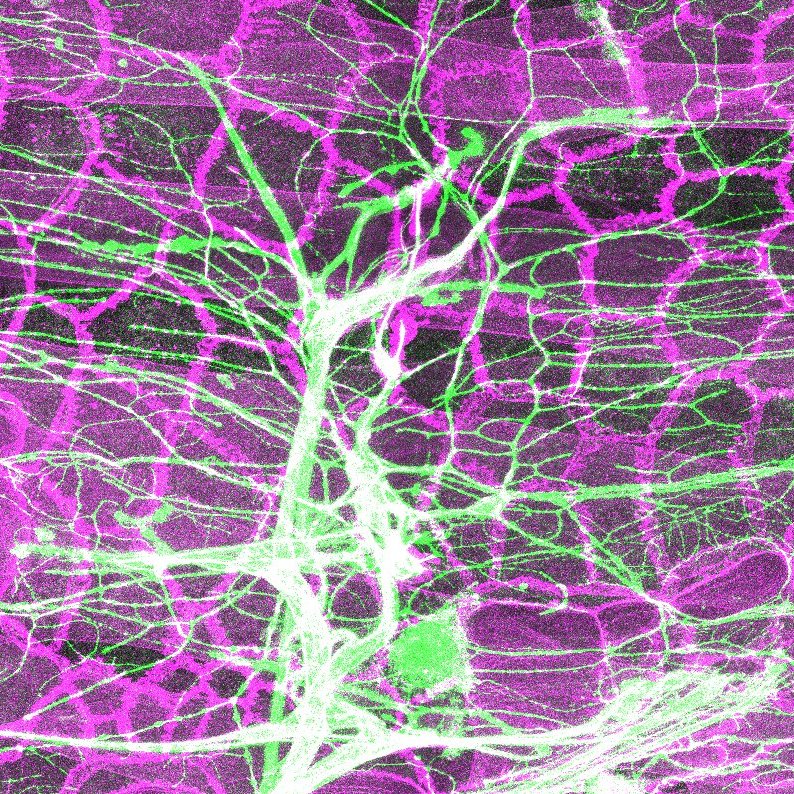
Amy is more broadly curious about what proteins are at the interface of epidermal-sensory neuron contacts, and their effects on behavior and development of sensory neurons. She would like to find proteins known to be at sites of ensheathment to learn what else might be there. Identifying proteins at this interaction site could be insightful into what is needed for proper structural integrity of the cell-cell interface.
Ultimately, Amy is excited about the molecular mechanisms that affect and enable sensation. “The structural relationship between cells can have a big implication on a fly’s ability to sense, and the ability to sense its environment can shape its experience” she explains as she settles in to begin a dissection for microscopy. “It is interesting to me that there can be proteins that can shape how we experience the world”. I agree as she sets off to discover these proteins.
